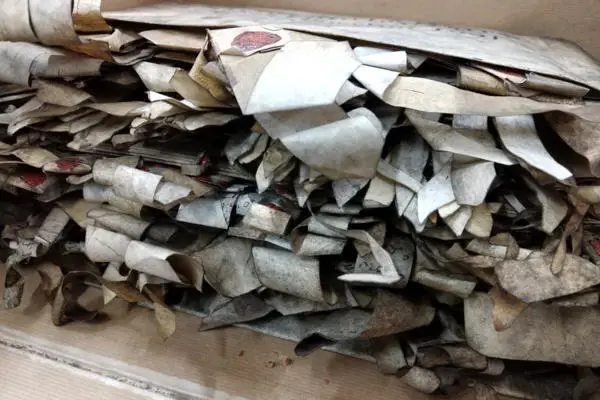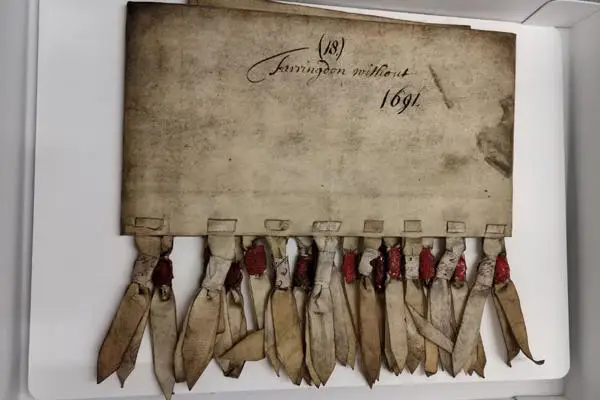Conservation in Action: Hanging Seals
Repackaging boxes of deeds
One of our priorities at London Metropolitan Archives (LMA) is to make sure that our collections are housed correctly for long term storage. We rely on our staff and users in the Archive Study Area to flag up items that need attention from our boxing team and it was through a recent user request that we found a collection of late seventeenth and eighteenth century City of London ward presentments with multiple hanging seals in need of some attention (COL/AD/04-032). LMA conservator Alex Wade describes the physical condition of the deeds and action she took to protect and improve their storage.

Description and condition of the documents
The deeds had been stored in overstuffed, acidic boxes and tied together in bundles using archival tape. The ribbon seals were entangled together causing damage to the fragile wax seals that were still present. They were difficult for users and staff to handle and separate from each other, and the numbering on each document was not immediately clear. Anyone trying to access a particular document would need to go through the whole stack to find what they were looking for. This increased the need to handle all the documents and therefore the risk of damaging the seals and the documents overall.

Packaging solution
As the collection as a whole is very large, we looked to undertake a minimal intervention approach that would protect the documents and improve the user and staff experience when working with them. This would negate the need to undertake conservation treatment on them at this time, therefore none of the documents were unfolded or flattened. By doing a minimal intervention treatment we were able to create a cost effective plan for treatment that, in theory, could expand out to the whole collection with scope for adaptations to be made to the packaging and annotations added in the future.
We were able to package the presentments into archival folders and standard size flat boxes as we had chosen not to unfold the items. This provided the added benefit that we could predict how much shelf space would be needed for a standard box, and that we could easily create and cost packaging from our backstock of packaging we make in house. Each document was separated with a piece of acid free card to ensure that the ribbon seals would no longer tangle together and the card provides a lifting platform for staff or users to support the seals and document as they lift it out of the box.
By packaging the documents in this way we can now write specific handling guidelines for readers on the outside of the housing, such as: to wear gloves, and to support the seals when opening the documents. This increases the likelihood of improved handling of the document and therefore protects its condition in the long term. We can also add the individual numbers of the items to the box, preventing the need to rifle through everything to find a specific document or date. We can also add condition labels at item level to the box so that staff are aware of the condition of specific items before they get to users. An example of this might be that item number three of four is listed as unfit on the catalogue so we now have this written on the front of the box so that it can either be removed before production or the usage of the box can be monitored.